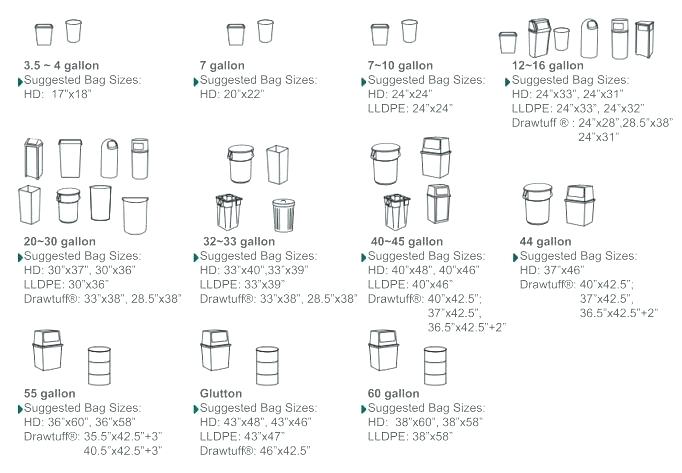TRASH CAN LINER SELECTOR
Belows are some useful tips to determine what type of liner would work best in your facility.STEP 1: WHAT APPLICATION THE LINER WILL BE USED IN?
Linear Low Density (LLD) Trash Can Liner Advantages
- LLD can liners have superior stretch properties making them highly puncture and tear resistant
- LLD trash bags are an excellent choice for waste with sharp and jagged edges
- LLD trash bags strength and stretch properties make them a great multi-purpose can liner
High Density (HD) Trash Can Liner Advantages
- HD trash trash bags are an excellent economical choice for heavy, wet trash and soft refuse as long as there are no sharp or irregular shaped objects
- HD trash can liners have a superior vapor and moisture protections, and are USDA and FDA approved for food use
- HD trash bags have smaller, lighter cases, which lower freight, storage and warehousing costs
- HD trash can liners are more temperature resistant (-40 degrees to +212 degrees)
STEP 2: WHAT SIZE LINER DO I NEED?

Each container should have a gallon capacity or size printed on it.
Just match the picture to your receptacle and it will tell you
which size trash bag you need.
Bag Width: To calculate the proper width of the trash can liner for your container, simply divide the circumference of your container by 2.
Square Container Circumference: Circumference = sum of all four sides added together.
Round Container Circumference: Circumference = diameter multiplied by 3.14.
Bag length: (round & square containers) add the height of the container, plus 4-5 inches for overhang.
STEP 3: HOW MUCH WEIGHT WILL THE LINER NEED TO HOLD?
To determine the strength needed for your trash can liner, estimate the average weight of a full trash can liner
in your application and match it to the max load capacity listed for each liner.


